 |
ChessBase Reviews |
Last updated 12 April 2013

| index |
CDs, DVDs, Software Part 52

Secret Weapon: Four Knights Game By Valeri Lilov
The Four Knights Game is a strong opening system that White can employ to crush his or her opponent with its ostensible simplicity.
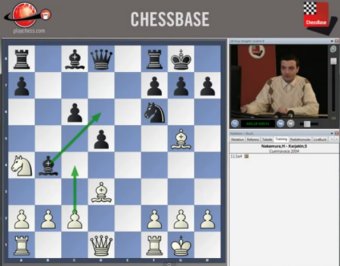
In the present DVD, FM Valeri Lilov takes on the task of acquainting you with the quirks of one of his favourite openings.
Quite an experienced player of it, he demonstrates to you its power and flexibility when played from the White side by famous top GMs like Carlsen and Radjabov.
In a number of carefully planned lectures, the author devotes time to explaining different variations in this opening system and illustrating the correct plans and ideas for every continuation with sample master games.
Some of the major lines discussed include the Spanish Four Knights and the Scotch Four Knights, as well as the Belgrade Gambit and the Glek Variation. Video running time: 4 hours 14 min.
System requirements: Pentium-Processor at 300 Mhz or higher, 64 MB RAM, Windows XP, Windows Vista, Windows 7, DVD drive, mouse, soundcard.

Know the Terrain Vol. 4: The Advance French Structure By Sam Collins

The information explosion has led to a massive increase in opening theory. But how often do you win a game with a prepared line? What gives strong players the edge over their opponents is not some blockbuster novelty, but a deep understanding of the pawn structures to which their openings lead – an understanding that lasts into the middlegame and endgame, and is transferable between different openings with similar structures.
In this DVD, Sam Collins looks at the Advance French Structure (white pawns on d4 and e5 against black pawns on d5 and e6, with an open c-file) which, while characteristic of 3.e5 in the French, is also typical of other French variations, the Advance Caro-Kann, the Queen’s Indian, the Catalan, the Slav and various Anti-Sicilians. The blocked centre forces play to the wings. White will normally concentrate on furthering his kingside ambitions, supported by the space advantage conferred by his pawn on e5, either by piece play or by the typical pawn advances h4-h5 and f4-f5. Black, for his part, seeks queenside counterplay, simplification, or a well-timed break with ...f6 leading to a central battle.
The relatively closed nature of the positions leads to strategic play where knowledge of typical plans for both sides is of decisive importance. Video running time: 3 hrs. 36 min.
System requirements: Pentium-Processor at 300 Mhz or higher, 64 MB RAM, Windows XP, Windows Vista, Windows 7, DVD drive, mouse, soundcard.

1.e4 - How to tame the Alekhine, Scandinavian and Pirc By Viktor Bologan
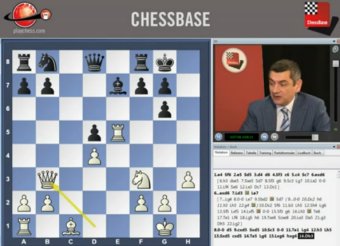
While almost everybody is spending 95% of his opening preparation time on major lines, there are some tricky players including strong GMs (I am not an exception) who prepare for their opponents some side lines, which contain many an underwater reef.
I decided to collect those secondary openings in one single DVD. From now on openings such as the Pirc, the Scandinavian and the Alekhine Defences will not appear to you in your nightmares any more.
The 1.e4 player should actually thank Black for choosing these openings, since he is providing White with a better centre, a stable advantage and generally speaking pleasant play. The only thing White needs to do is to spend some time studying the lines.
I will not bother you with encyclopaedic approach. There is a more practical way. Against each opening I recommend one repertoire:
- For the Pirc I have prepared for you the Austrian Attack.
- Major lines against the Scandinavian.
- And for the Alekhine I decided to go for the positional lines with Nf3.
Enjoy the videos and be critical please: I don’t claim to give you the ultimate truth, I just want to help you to enrich your chess vocabulary! Video running time: 4 hours 30 min.
System requirements: Pentium-Processor at 300 Mhz or higher, 64 MB RAM, Windows XP, Windows Vista, Windows 7, DVD drive, mouse, soundcard.

The English Defence By Dejan Bojkov
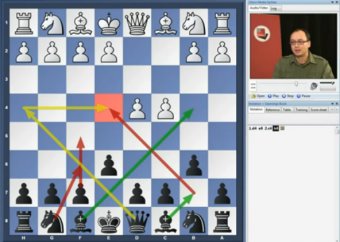
In the 1970s a group of strong English players (Miles, Speelman, Keene above all and later Short) developed a slightly unusual opening starting after the moves 1.d4 e6 2.c4 b6. Just like in the Grünfeld or the Alekhine Defences, Black concedes the centre.
However, rather than provoking pawn advances by an early development of the knights, Black wants instead to develop his bishops (most frequently to the squares b7 and b4). This approach contradicts the orthodox rule of development (knights before bishops) but is not it better to get some pieces out instead of spending a lot of tempi with the knight in provocation?!
The original character of the play as well as the good preparation by the aforementioned grandmasters led to the recognition of this setup as the English Defence. This opening, which is still very young and unexplored, has recently attracted some top players (Morozevich, Ponomariov, Mamedyarov) who have made good use of it in their games.
In his latest DVD Dejan Bojkov of Bulgaria explores the line in detail and supplies you with all the information you require in order to be successful with the English Defence. Typical positional and tactical ideas are supported by plenty of theoretical information. Video running time: 5 hours 9 min.
System requirements: Pentium-Processor at 300 Mhz or higher, 64 MB RAM, Windows XP, Windows Vista, Windows 7, DVD drive, mouse, soundcard.

Attacking with the Pirc By Dejan Bojkov
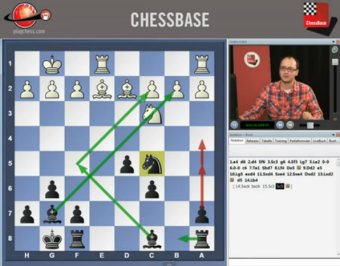
The Slovenian GM Vasja Pirc was a five-time Yugoslavian champion. This speaks volumes for his playing strength but there is a more important contribution which he has made to the chess world.
The defence which he explored in detail after the moves: 1.e4 d6 2.d4 Nf6 3.Nc3 g6 is named after him. There were ups and downs in the appearance of the Pirc in tournament practice. Many people considered it dubious. However, the Pirc survived and it is coming back into fashion nowadays again.
The reasons for that are the flexible nature of the position and the variety of possibilities that both sides have. One should expect that the fewer options which White has the easier the defence would be. Indeed, there is logic in that, but, on the other hand, correct play by both sides should lead to a draw.
Instead of this approach the Bulgarian grandmaster Dejan Bojkov offers an aggressive repertoire for the second player in this new DVD. Black risks more than usual but hopes for higher dividends in return for the risk.
The original analyses on the DVD will help the reader control the risk involved. Video running time: 4 hours 29 min.
System requirements: Pentium-Processor at 300 Mhz or higher, 64 MB RAM, Windows XP, Windows Vista, Windows 7, DVD drive, mouse, soundcard.
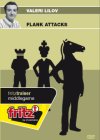
Flank Attacks By Valeri Lilov

The flank attack is one of those sneaky ways of surrounding your opponent’s forces and getting to your target fast! So, do we really need to master flank attacks to use them or protect ourselves from them effectively?
The answer is a resounding “Yes!” In this DVD, FM Valeri Lilov dwells on the importance of understanding flank attacks by presenting a number of concepts and typical scenarios with which a master of the flank attack should be familiar.
The role of the centre during a flank attack and the typical patterns you should recognise before correctly initiating a flank attack are some of the themes the author explains and illustrates with good examples taken from the best games of renowned chess masters such as Alekhine and Capablanca.
On the other hand, the FIDE master also teaches how to thwart your opponent’s flank attacks in different positions and the golden rule to know when you are on the defensive. This DVD gives the answers to all these questions and more! Video running time: 4 hours.
System requirements: Pentium-Processor at 300 Mhz or higher, 64 MB RAM, Windows XP, Windows Vista, Windows 7, DVD drive, mouse, soundcard.